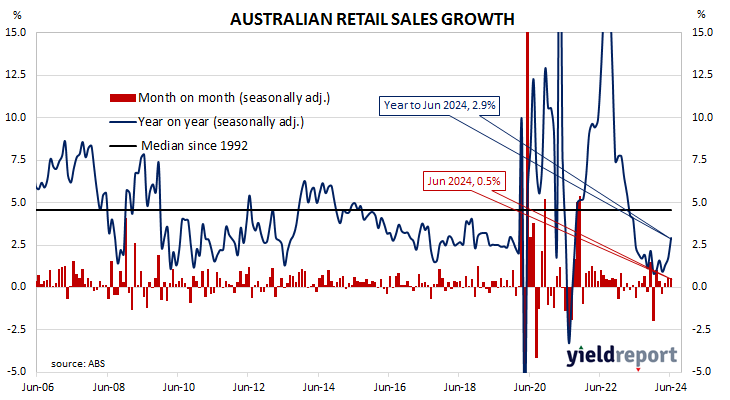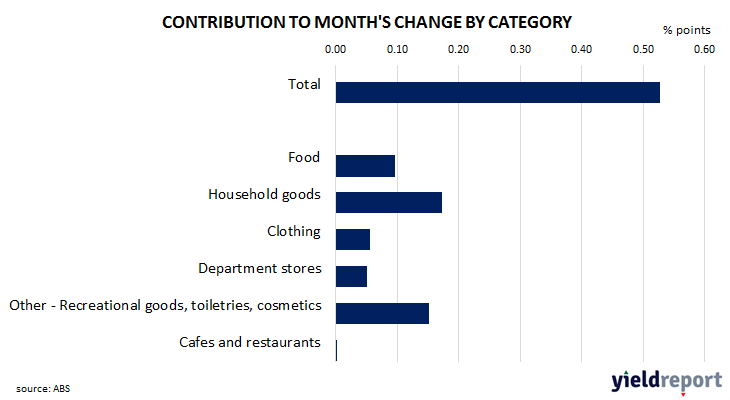Summary: Retail sales up 0.5% in June, noticeably more than expected; up 2.9% on 12-month basis; ANZ: likely related to end-of-financial year sales, may also suggest households pre-emptively spent some of Stage 3 tax cuts; ACGB yields plunge; rate-cut expectations harden; ANZ: may suggest on cusp of lift in spending; largest influence on result from household goods sales.
Growth figures of domestic retail sales spent most of the 2010s at levels below the post-1992 average. While economic conditions had been generally favourable, wage growth and inflation rates were low. Expenditures on goods then jumped in the early stages of 2020 as government restrictions severely altered households’ spending habits. Households mostly reverted to their usual patterns as restrictions eased in the latter part of 2020 and throughout 2021.
According to the latest ABS figures, total retail sales rose by 0.5% on a seasonally adjusted basis in June. The rise was noticeably more than the 0.2% increase which had been generally expected and just short of May’s 0.6% increase. Sales increased by 2.9% on an annual basis, up from May comparable figure of 1.7%.
“While the lift is likely related to increased spending around end-of-financial year sales, it may also suggest households pre-emptively spent some of the money they were expecting from the Stage 3 tax cuts,” said ANZ economist Catherine Birch.
The update was released on the same day as the latest CPI figures and Commonwealth Government bond yields plunged on the day, with falls at the short end outpacing movements of longer-term yields. By the close of business, the 3-year ACGB yield had shed 23bps to 3.72%, the 10-year yield had lost 17bps to 4.12% while the 20-year yield finished 12bps lower at 4.51%.
Expectations regarding rate cuts in the next twelve months hardened considerably. Cash futures prices at the end of the day implied the cash rate now has some chance of falling below the current rate of 4.34% in the short-term, with an average of 4.33% in August and 4.255% in November. February 2025 contracts implied 4.145% while May 2025 contracts implied 3.93%, 41bps less than the current cash rate.
“When considered alongside the momentum in ANZ-Roy Morgan Australian Consumer Confidence over the past fortnight, it may suggest we are on the cusp of a lift in spending,” Birch added. “That said, we are moving from a weak starting point, with retail volumes falling for six of the last seven quarters.”
Retail sales are typically segmented into six categories (see below), with the “Food” segment accounting for 40% of total sales. However, the largest influence on the month’s total came from the “Household goods” segment where sales rose by 1.1%.



